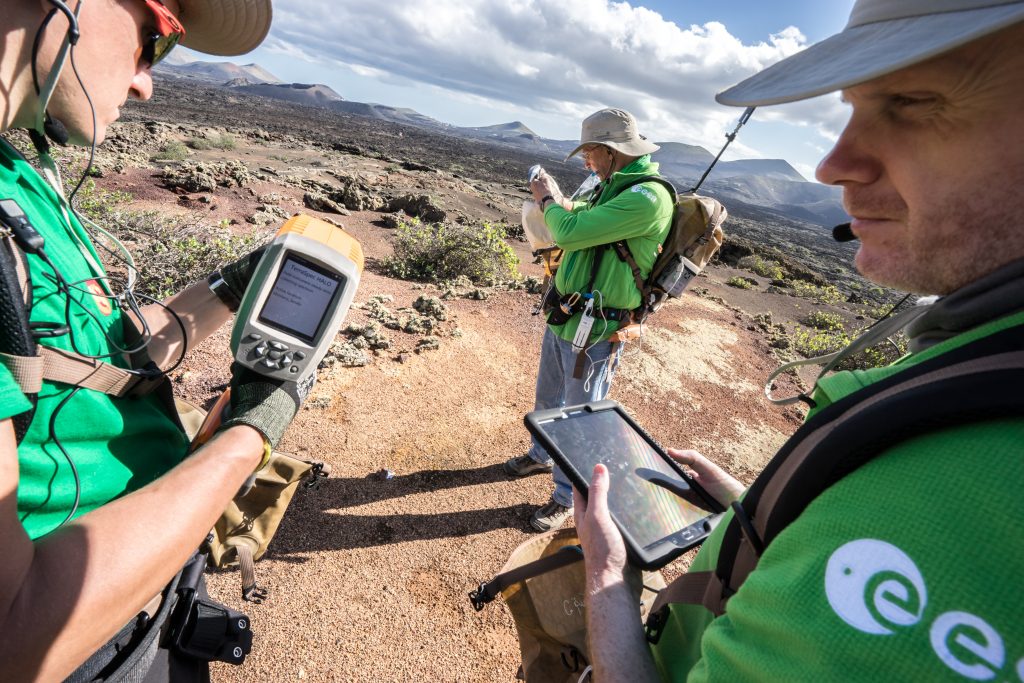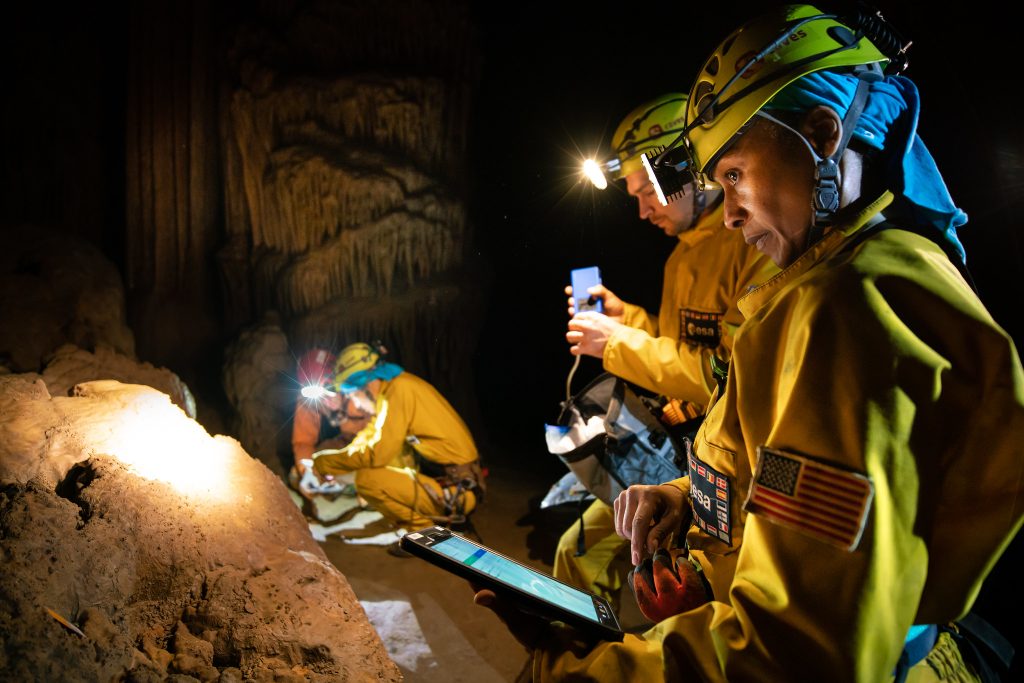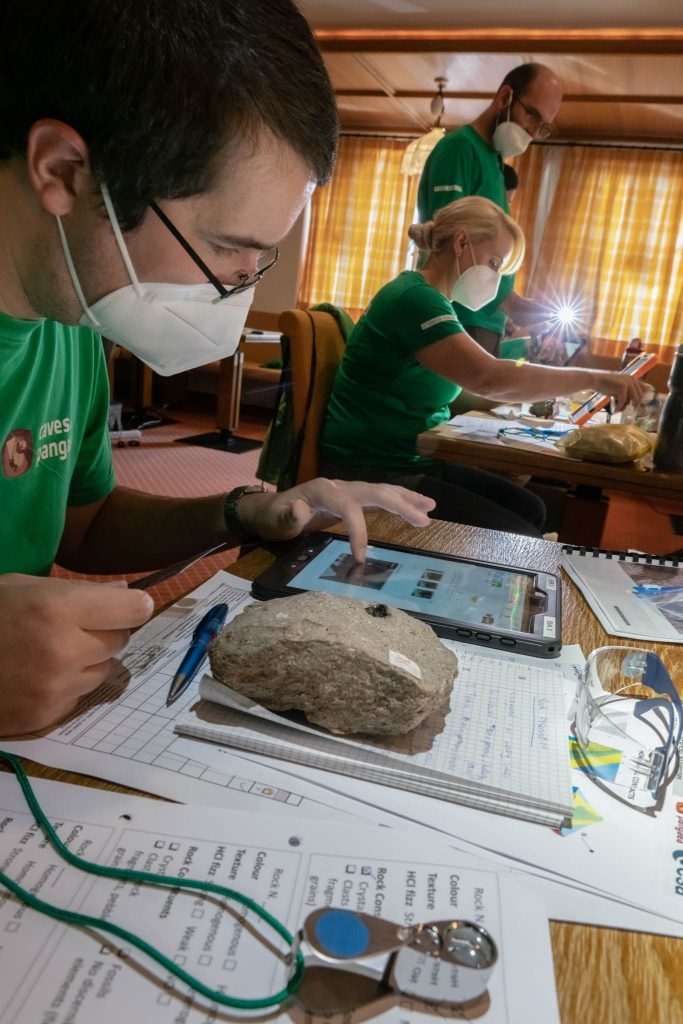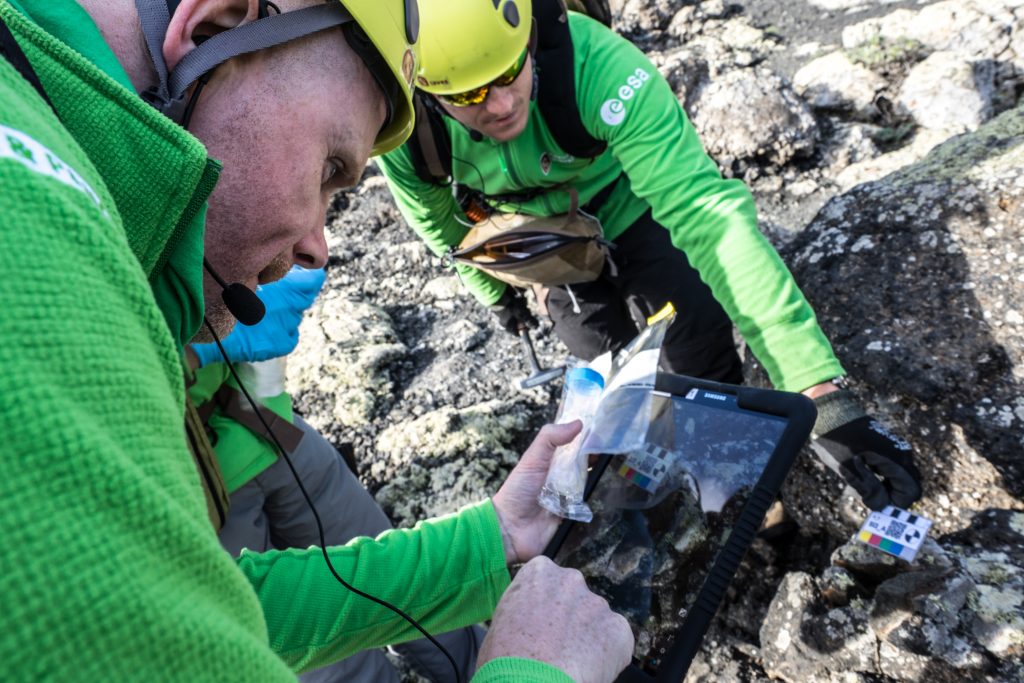Explore the Moon, you say? Not without my app.
ESA is developing a digital tool to support lunar exploration. The Electronic Field Book (EFB) is an all-in-one information system that exchanges data and integrates science activities in remote environments.
The app works on a hand-held device. “In terms of performance, it is like a space iPad or a Samsung Galaxy Note,” explains Giorgio Magistrati, team leader of ESA’s Exploration Preparation, Research and Technology team.

During a lunar expedition, the Electronic Field Book could help astronauts identify minerals and rocks, record each step of the space sortie, communicate with scientists on Earth and integrate inputs from external tools such as microscopes, 360-degree cameras or spectrometers.
“Moonwalkers will be able to check three-dimensional maps, recognise a rock among thousands of mineralogical profiles and collect the best samples,” says computer engineer Leonardo Turchi, and ‘father’ of this promising interface.
The tool was first developed to support the Pangaea training campaign back in 2018 and was enhanced one year later for the CAVES course, where six astronauts spent days in the depths of Earth to improve their communication, problem-solving and teamwork skills. A hundred metres inside a cave, there was no signal, no geolocation, no calls, no data providers.
“It was a digitally virgin environment, just like it would be on the Moon,” recalls Leonardo.

A truly intelligent, flexible explorer
The Electronic Field Book team is back for the fourth edition of Pangaea in 2021 to fine tune the app during geological expeditions.
“We are creating a technology for space exploration that does not exist,” says Giorgio, who is in charge of monitoring the electronic heart of the tool. Testing the concept on Earth with astronauts is just the first step.

Giorgio defines the system as “versatile and modular. We can tailor it to work with different instruments.” To make it truly intelligent, ESA is using a machine learning algorithm that speeds up the identification of minerals.
Forward to the Moon
New telecommunications and navigation services for missions to the Moon are being developed under the ESA’s Moonlight initiative.
“We need a network on the Moon to sustain space exploration. Having the possibility to transfer data between the Earth and Moon at all times will give a boost to the Electronic Field Book,” says Giorgio.
European teams are developing the Electronic Field Book to support future Moon surface science operations. ESA is going forward to the Moon together with its international partners. “We are also incorporating operational concepts aligned with NASA’s Artemis missions,” says Leonardo.
Bring scientists along
Leonardo likes to highlight that the Electronic Field Book helps astronauts to take decisions on rock sampling during field expeditions. “Our system organises all data in real time – a crucial feature during expeditions with limited time and complex logistics. Most importantly, it allows remote scientific assistance,” says Leonardo.

This collaborative platform promotes an open dialogue between explorers and scientists. “The Electronic Field Book allows scientists to be on the Moon. We like to call it ‘augmented science’,” adds Leonardo.
An app to go beyond
The team is working to make the tool suitable for space by 2027. The lunar environment poses several threats they have to deal with, such as radiation, the abrasive Moon dust and extreme temperatures.
Shape and size are also a challenge. “We are looking into ergonomics, so the tool can be operated with the bulky gloves of the spacewalk suit,” says Giorgio. Making it smaller and lighter is another hurdle. The current version has batteries with an autonomy of eight hours.

Although the app is designed for scientific support during astronaut training, the field book could be scaled to a powerful tool for any scientific field expedition, even underground and for maintenance operations in remote areas.
In the meantime, the app is set to updating mode during the current Pangaea campaign. Stay connected.
More information:
- ESA’s Invitation to Tender: https://esastar-publication.sso.esa.int/ESATenderActions/details/20252

Discussion: 2 comments
I love the preparations being done to train astronauts o go to the moon.
But.
We haven’t proven we safely can. No SLS, no Starship.
It seems a bit hollow. We have to have something ttangable to say, we are on our way!
Muy interesante, me gustaria tener los archivos en español para trabajarlos con mis alumnos, ojala se pudiera